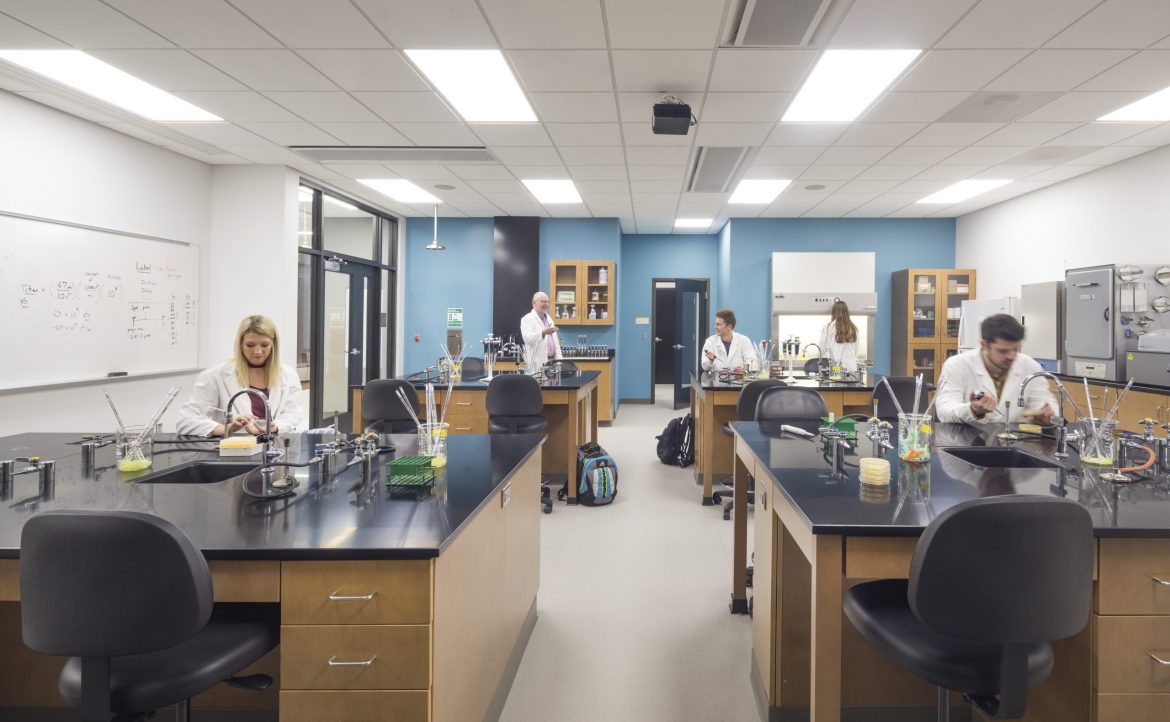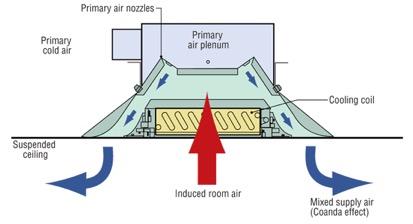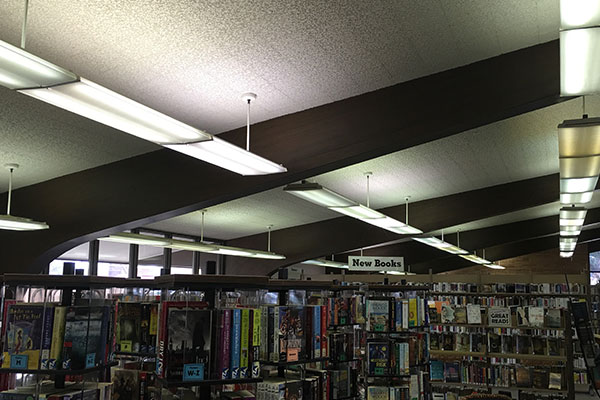Celebrating 40 Years!
This October marks a significant milestone for Engineering Design Associates, Inc. – 40 years in business!
Founded in 1985 by Dean Pfeil, EDA began as a mechanical, HVAC and plumbing engineering firm. In 1994, the company expanded its services by adding electrical engineering to its portfolio.
We are deeply grateful to our clients, partners, and community for their trust and support over the past four decades.

What’s All This Talk About Chilled Beams?
For those wondering about this new-fangled “chilled beam” technology, this article is for you. There are two kinds of chilled beams – passive and active. Passive chilled beams are less practical for most applications in our upper midwestern climate; only active chilled beams will be discussed in this article.
So, what is an active chilled beam, and how does it work? An active chilled beam uses nozzles to generate high speed jets of air that create a negative pressure inside the device. This negative pressure draws room air through a finned tube coil, or “beam” (similar to a car radiator), which cools the air and mixes it with the jets. It’s called “induction” and allows the beam to multiply the primary air flow into the room by two to four times.
Using induction is actually not a new idea; the concept was used in high rise buildings in the 1950s and 1960s, such as the Prudential Building in downtown Chicago, which used “high pressure induction boxes” installed under windows. Today’s chilled beams are typically installed in ceilings and are quieter, less intrusive, and more energy efficient. Chilled beams have been used in Europe and Australia for decades and have been making significant inroads in North America over the last ten years.

So, what are the benefits of an active chilled beam system?
- A properly designed chilled beam system more effectively ventilates the space than typical overhead air delivery systems, which can result in a healthier indoor environment.
- A chilled beam system can be about 20% more energy efficient than some other systems, resulting in lower annual operating costs. This is because it uses water to move energy around the building, which is usually more efficient than using air. It can also reduce energy used to heat and cool outside air, because it provides more effective fresh air ventilation.
- Chilled beams can provide improved comfort over some systems, due to more effective air distribution in the room.
- Chilled beams require less maintenance and repairs than some systems, due to less moving parts.
- If the building height can be reduced, a building with an active chilled beam system can often be built at no extra overall cost due to the reduction in exterior wall construction.
What are the limitations of active chilled beam systems?
- They are not recommended for use in lobbies, swimming pools, restrooms, locker rooms, kitchens, rooms with operable windows or exterior doors, and buildings with leaky walls or windows. These kinds of spaces can have high humidity levels due to moisture either generated in the space or leaking into the building from outside.
- Chilled beams do not work well in gyms and other spaces with very high ceilings (over approximately 15 feet); they just can’t “push” the air down to the occupants as well as other systems.
- Chilled beams do not heat well. For spaces with exterior walls, especially where there are windows, baseboard heat or radiant ceiling panels will typically be required to provide effective heating in the winter.
- A centralized chilled water and hot water plant is required.
- A centralized air handling system with dehumidification equipment is required to provide the primary air to the chilled beams.
- A chilled beam HVAC system costs more to install than most other HVAC systems. If the building height cannot be reduced, a building with a chilled beam system will typically cost more overall to construct.
K-12 schools and college/university classroom buildings, office buildings, nursing homes and science laboratories are all potential candidates for a chilled beam system. EDA’s engineers have designed active chilled beam systems for all of these types of facilities. Give us a call if you’re wondering whether chilled beams would be a good fit for your next project!

Can Lighting Really Affect Health and Performance?
by: Andy Landman
With the rise of LED lighting and new methods of controlling our lit environments, new possibilities are opening up for building designers and building owners. Terms like “human centric lighting”, “tunable lighting”, “circadian rhythms”, are being used to try to describe the visual and non-visual effects that artificial lighting has on people. All of this begs the question – “How should we be evaluating the claims being made about artificial lighting and its effects on health and performance?”


Recently, the US Department of Energy released a study titled “Tuning the Light in Classrooms: Evaluating Trial LED Lighting Systems…” (https://www.energy.gov/eere/ssl/downloads/tuning-light-classrooms). This study evaluated three Texas classrooms, a fourth grade reading classroom, a fifth grade math and science room, and an eight grade science lab. Existing fluorescent lighting was replaced with a “tunable white” LED lighting system allowing the intensity and color temperature of the fixtures to be varied over the course of the school day. To summarize the results, the faculty and students noticed an improvement in the room environment due to the additional control the lighting system offered, but the “circadian and behavioral effects were beyond the scope of the project.” By the study’s own admission, we currently lack methods to quantify and justify the non-visual effects of these lighting systems.

